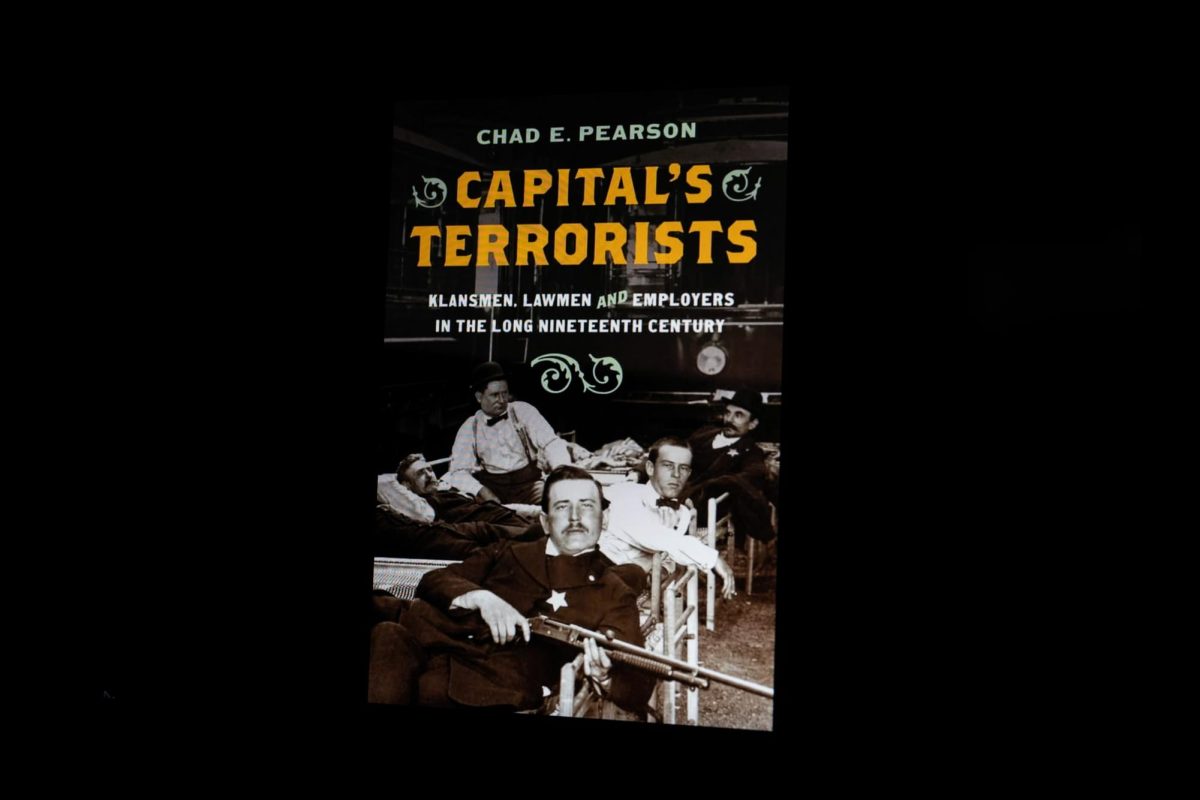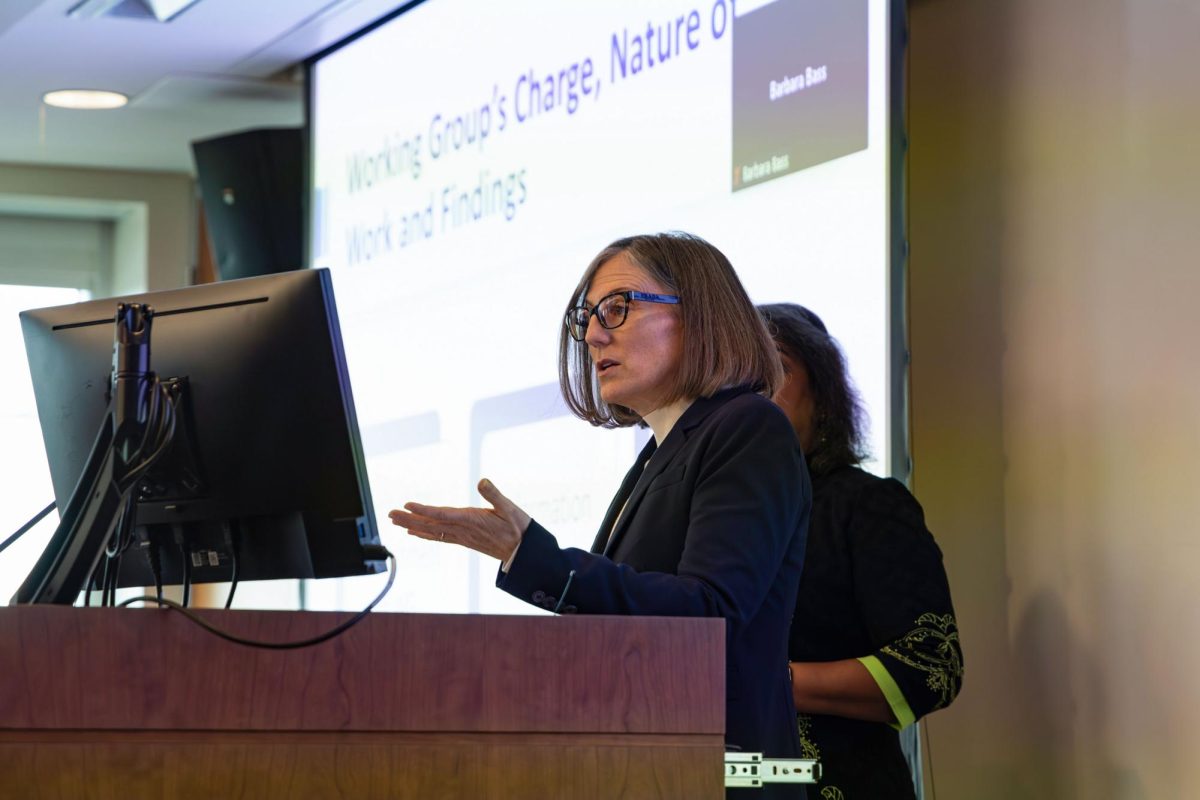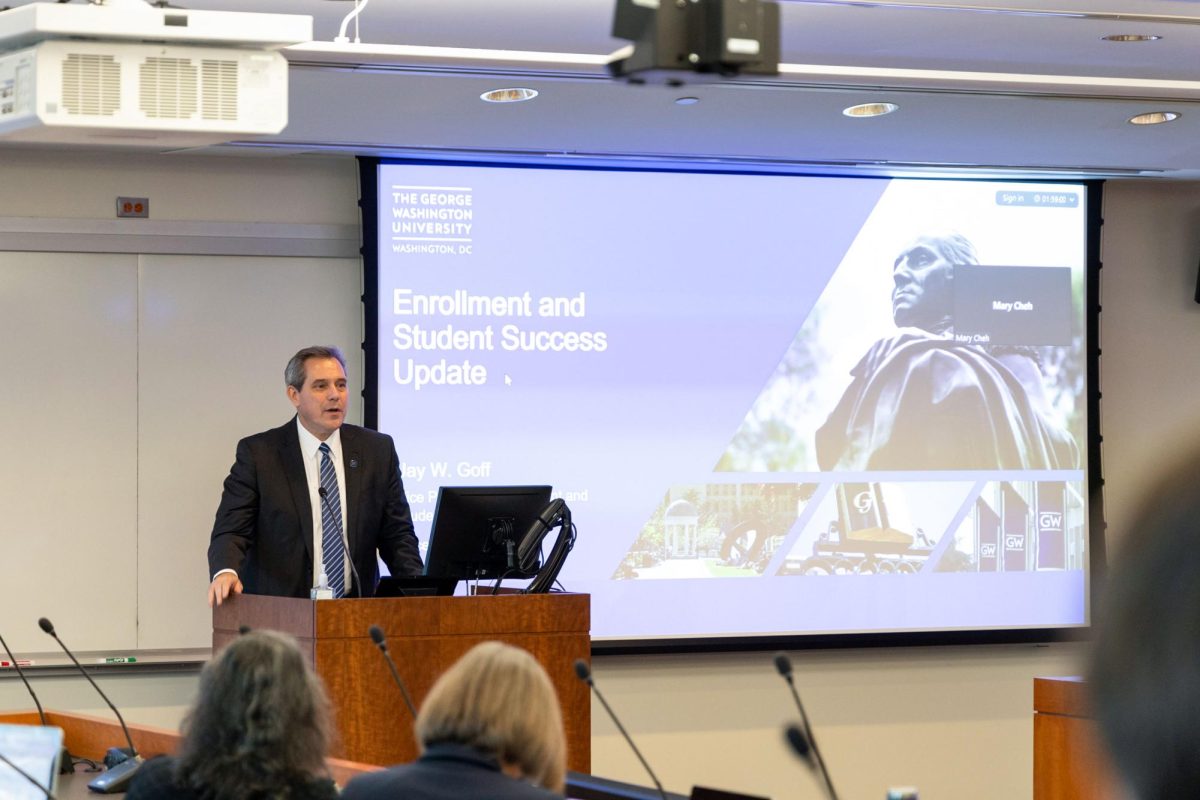An author and professor discussed the often violent anti-labor practices of the late 19th and early 20th centuries for a book talk at Gelman Library on Thursday.
Chad Pearson, an assistant professor of history at the University of North Texas, discussed his book “Capital’s Terrorists: Klansmen, Lawmen, and Employers in the Long Nineteenth Century,” which focuses on the suppressive and occasionally violent efforts — sometimes involving the Ku Klux Klan — taken to keep working people out of power which were sometimes violent. The discussion was hosted by the GW International Brotherhood of Teamsters Labor History Research Center, an organization that studies how the labor movement affected the development of the U.S. during the 19th, 20th and early 21st centuries.
Pearson said in the years after the civil war, the U.S. became the most economically powerful country on the globe, which he related to a rise in violence against the labor movement as the elite became more protective over their financial interests.
“In the years after the Civil War, the U.S. earned at least two important distinctions, it became the world’s most important economic powerhouse surpassing England and also it led other countries in the amount of anti-labor violence,” Pearson said.
Pearson said although there is an image of businessmen of this time being civil, “well dressed” and “well mannered” many held membership in organizations like the Ku Klux Klan and Law and Order leagues that had direct and indirect connections to violence against workers and labor organizers.
“Some are involved in direct combat, others supported efforts but did not necessarily get their hands dirty,” Pearson said. “So I’m really looking at the relationship between vigilantism and management, I think there’s a tight relationship that hasn’t really been explored in many history books.”
He said the people who were committing these acts of violence against laborers were doing so under the guise of law and order and vigilantism, attempting to keep the business owners in power by suppressing the voices of laborers.
“So the folks I talked about engaged in these sorts of activities under the banner of law and order. Isn’t vigilantism interesting? You break the law, to uphold the law,” Pearson said.
Pearson said the Ku Klux Klan of this time — who killed about 3,000 people between 1868 and 1876 — did not want Black people to have access to education, firearms or voting, and called the Klan a “white supremacist labor” organization. He spoke about violent events across the country, which included shootings, thrashings and mass arrests of workers.
Pearson said in the epilogue of his book he discusses how the “capital terrorists” he wrote about, turned into “terrorists in the Capitol” during the insurrection on Jan. 6, 2021. He said those who counterprotest against causes like the Black Lives Matter movement should also be considered to be committing “terrorism” in the same way that the anti-labor vigilantes were in the late 19th and early 20th centuries.
“I think we must call this terrorism, and we must acknowledge that such actions have a long history,” Pearson said.





